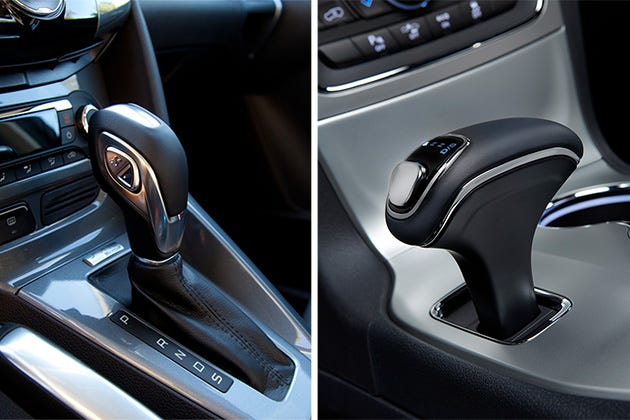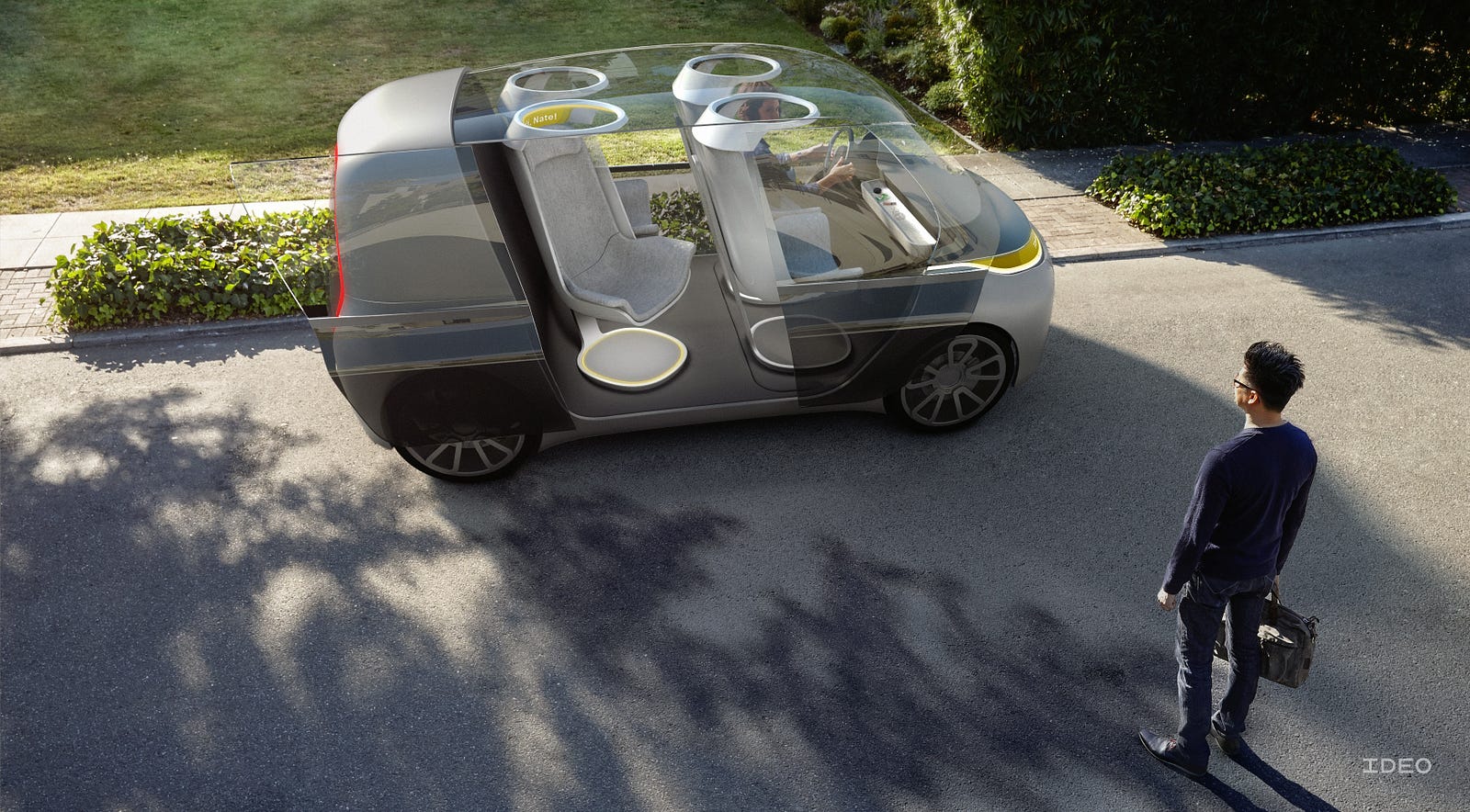Bad Car Design Kills: Self-Driving Cars or Not
Bad Car Design Kills: Self-Driving Cars or Not
- Last Updated: December 2, 2024
Hannah White
- Last Updated: December 2, 2024



Wrecks caused by self-driving cars have gotten a lot of heat in the press lately, sparking debate on whether or not machines can be safer than humans. But bad car design, and the consequent tragedies, have been an issue since Carl Benz designed the first car with a gasoline engine back in 1879.
Although we’ve seen incremental improvements in overall automobile safety every year since, along with car body redesigns to reflect the times (remember the Edsel?), there have been more than a few UX failures on the way.
Twenty years ago, Europe’s New Car Assessment started testing cars for safety. In honor of their 20 year anniversary, they crash-tested a 1997 Rover 100 with the 2017 equivalent, a Honda Fit. The results will make you thankful that it’s no longer 1997, those dummies in the Rover never stood a chance.
But there’s only so much that can be explained as “progress”. Shockingly, 50% of car users (i.e. women) were completely ignored in all safety analyses and car designs until 2011.
Blatant Disregard for Users Kills
For 30 years, it was assumed that using crash dummies modeled after a 6ft tall male would adequately test for the safety of both men and women. And before crash dummies, we used live animals and dead people. Don’t believe me? Spain still used them as of 2013 and when crash dummies first came out in the 80s, they were so popular they had their own toy line.
Overall, women are killed in crashes at disproportionally higher rates than males, because they were never included in the safety analysis.
Females make up one-quarter of all driver fatalities and one-half of all passenger fatalities, but men drive 50% more than women and average 5,000 more miles driven per year. It wasn’t until 2011 that the federal government changed out the average male dummy for a smaller female dummy in some tests (even then, this didn’t include any tests in the driver’s seat). And even then, the single female crash dummy they use is 4'11 and 70kg. Not exactly your average woman.
This oversight, leaving half of the population out of the analysis entirely, is about as bad as bad design gets.
Even now, NHTSA officials warn consumers to not compare models in years previous to 2010 with years since because the tests have changed so drastically. A 5-star rating in 2008 could be less safe than a 3-star rating in 2012. Can’t afford a newer car and happen to be female? Tough luck.
Unintuitive Car Design Kills
A more recent case of a UX failure resulting in death is Anton Yelchin, who was crushed to death by his Jeep Grand Cherokee. The exact events that led to the Jeep rolling down the hill and catching Yelchin between the security gate of his Los Angeles home and his Jeep Cherokee are unknown, but we do know that the Jeep was part of a recall by Fiat Chrysler of over 1.1 million cars.

The problem? A confusing gear shifter. The gear pops back to the center after you change gears, which was found to be unintuitive and reduced its' safety rating.
Over 100 crashes were caused by a car rolling away when owners thought the car was in park, with a total of 41 injuries. I won’t pretend to know their user testing process, but I do question how this got all the way to market without being shut down.
Finally, Low Safety Standards Kill
When cars are hit from behind, many driver seats and front passengers seats collapse backward, launching the occupants into the backseat area. This is problematic for the passengers in the backseats, who have a much higher risk of injury in these cases, and possibly death.
Even cars with 5-star ratings have these defects. The NHTSA has been advising parents to put children in the backseat for years, and this revelation alarmed many families and ended in a lawsuit that settled for $124.5 million dollars.
The couple launching the lawsuit wanted to show how flawed the NHTSA law is. They had bought a car with a 5-star safety rating, and their child still ended up dying in a wreck because of this seat design.
In the words of Jeff Wigington, “I was shocked when I looked at the crash-test videos and observed the way the seats moved. I couldn’t believe that they collapse and I couldn’t believe that they sold a vehicle when they knew their seats would perform in that manner”.
The Future of Car Design
In the age of the self-driving car debate, where does that leave us with design? Cars are currently designed with family units in mind, not complete strangers. This design won’t hold up when cars become a utility.
How can we craft an autonomous car experience that allows strangers to be just as comfortable as they would be on a train or airplane? And hopefully even more comfortable?

IDEO, an innovative design firm, has created the Future of Automobility project, where they take a look at what cars could look like in 2027. Many people are claiming that it’s the “most compelling look at an autonomous car future”. But what about all of the problems?
First, there is nowhere in this car design where you could store the car’s battery, much less the engine, as both the front and the back seem to be used for storage. Let’s not forget to mention that these people aren’t wearing seat belts, which have been mandatory by law for the last 50 years because they are proven to increase safety.
IDEO has created visual headpieces that can play music and alert you to incoming calls. But what happens in a crash when your head snaps against this headpiece while you’re not wearing a seat belt? The probable outcome is that your neck will snap. Even if you were wearing a seatbelt, they take space to fully catch you. Your head would still slam against the headrest and your neck would still snap.

A closer look at the seat design isn’t any more comforting. In order for your seat to swivel like it does in the image above, your attachment options would be limited. Generally, seats are bolted at all four corners to improve safety. In order for the seat to swivel, you would have less solid connectivity between the seat and the floor.
There are cases where swivel seats can be safer for people with disabilities, but these seats have a track on the bottom and a seat design that’s a far cry from the one shown above. Even looking past the swivel, the seat is only attached through one support beam that would most likely snap in an instant.
Also, where would you put your children? These cars are designed for strangers of course, but there’s no space for a child at all. A mother and child could never use this ride-share car.
Understanding that IDEO is not a car company or (hopefully) planning on ever implementing these designs does give them some leeway. But when we begin to champion IDEO’s view as the “future of cars” without looking at how the design would truly function, we fall into the same trap of those using male test dummies because they ‘probably’ represent enough of the population.
If we really are on the brink of a car revolution, in which the design of the car will be totally reimagined, let’s make sure we imagine a car that’s safe for everyone.
The Most Comprehensive IoT Newsletter for Enterprises
Showcasing the highest-quality content, resources, news, and insights from the world of the Internet of Things. Subscribe to remain informed and up-to-date.
New Podcast Episode

Moving Past the Pilot Phase in IoT and AI
Related Articles




